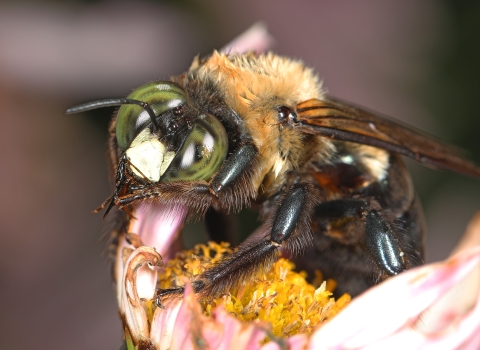Why is Lake Mattamuskeet important to waterfowl and aquatic life?
Mattamuskeet is a premiere National Wildlife Refuge for wintering migratory waterfowl along the Atlantic Flyway. The centerpiece of the refuge is the 40,000-acre Lake Mattamuskeet that provides forage and sanctuary for over 300,000 waterfowl each winter. When the lake was healthy, it was teeming with thick stands of submerged aquatic vegetation (SAV) that provided food for the wintering waterfowl and habitat for anadromous fish. Other wildlife species that occur in the lake include nesting osprey and herons, other long-legged waders, and migratory shorebirds. Important anadromous fish species include the American eel and alewife, a variety of game fish and the invasive common carp (Cyprinus carpio). The increase and abundance of carp in Lake Mattamuskeet is now a serious concern due to the impacts to SAV and cascading effects from the decrease and loss of SAV (USFWS 2018, Moorman 2017). Carp can invade eutrophic (nutrient-rich) lakes and stir up bottom sediments, which contributes to the loss of SAV.
Can SAV be restored in Lake Mattamuskeet?
Yes, by using Best Management Practices (BMPs) to reduce the excessive nutrient and total suspended solid inputs into the lake and remove the invasive common carp in the lake, SAV can be restored. The refuge and many partners are currently working to implement these BMPs and restore the SAV in the lake. An overview of the restoration project and latest updates can be found on the project page.
When did the SAV decline in the lake?
SAV on the lake began to decline during the late 1990s. By 2017, zero SAV was observed during the annual SAV surveys on the lake (USFWS 2018, Moorman et.al., 2017). Monitoring data collected since 1981 indicates SAV declines can be attributed to a series of events that started with declining water quality and clarity and significant increases in nitrogen and phosphorus observed in the lake. In 2016, N.C. Division of Water Resources designated the lake as 303d for impaired waters due to high pHs and chlorophyll a; both are indicators for cyanobacteria harmful algal blooms (cyanoHABs) which produce cyanotoxins (Cyanotoxin Health FAQ).
Why remove invasive common carp from the lake?
In several locations across the country, compelling research has shown that carp removal has been associated with improvements in water quality and clarity that promoted SAV restoration. The successful carp removal strategies recommend removing 75% of the existing standing stock biomass (Cahoon 1953, Weber and Brown 2009, Lamb 2018). On the Refuge, prior to the 1950s, turbid water conditions prevailed in the lake and were attributed to the large number of carp present. It was presumed that the turbidity prevented the growth and survival of submerged aquatic vegetation in the lake. During the 1940s and 1950s, a significant effort was used to remove the carp and restore SAV in the lake (Cahoon 1953). The SAV thrived for over 60 years until the late 1990s when water quality and clarity declined due to excessive nutrients.
The Refuge’s Habitat Management Plan calls for the removal of 75% of carp biomass for the purpose of promoting SAV growth and restoration and improving water clarity. This would support resources of concern including migratory waterfowl, long-legged waders, anadromous fish and other wildlife.
What is the cascading effect of invasive common carp in the lake?
The effects of carp in the lake ecosystem are complex and can be cascading (cumulative or additive "domino" effects that negatively affect the lake). Carp are bottom feeders that uproot submerged aquatic vegetation (SAV) and stir up bottom sediments while feeding and breeding. The excessive nutrients entering the lake from the watershed and the bottom sediments stirred up from the feeding carp block the sunlight essential for SAV to germinate and photosynthesize. Unfortunately, this has resulted in the near-elimination of SAV from the lake.
Without SAV, zooplankton and invertebrates have less cover, resulting in more predation and a subsequent reduction in zooplankton and invertebrate populations. The excessive nutrients in the water result in phytoplankton blooms, including blooms of cyanobacteria harmful algae, which further reduce water quality.




